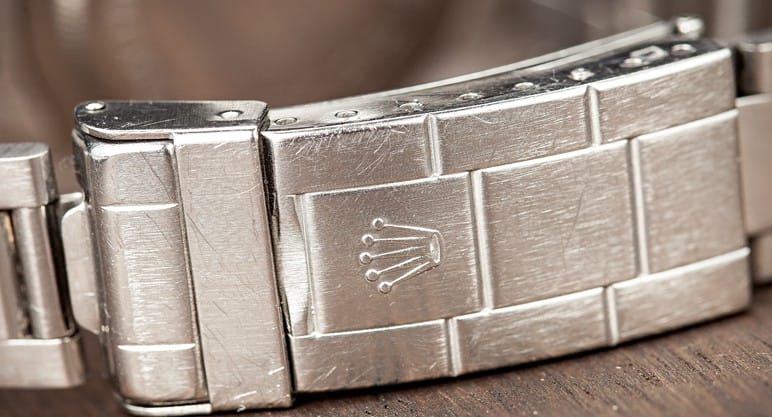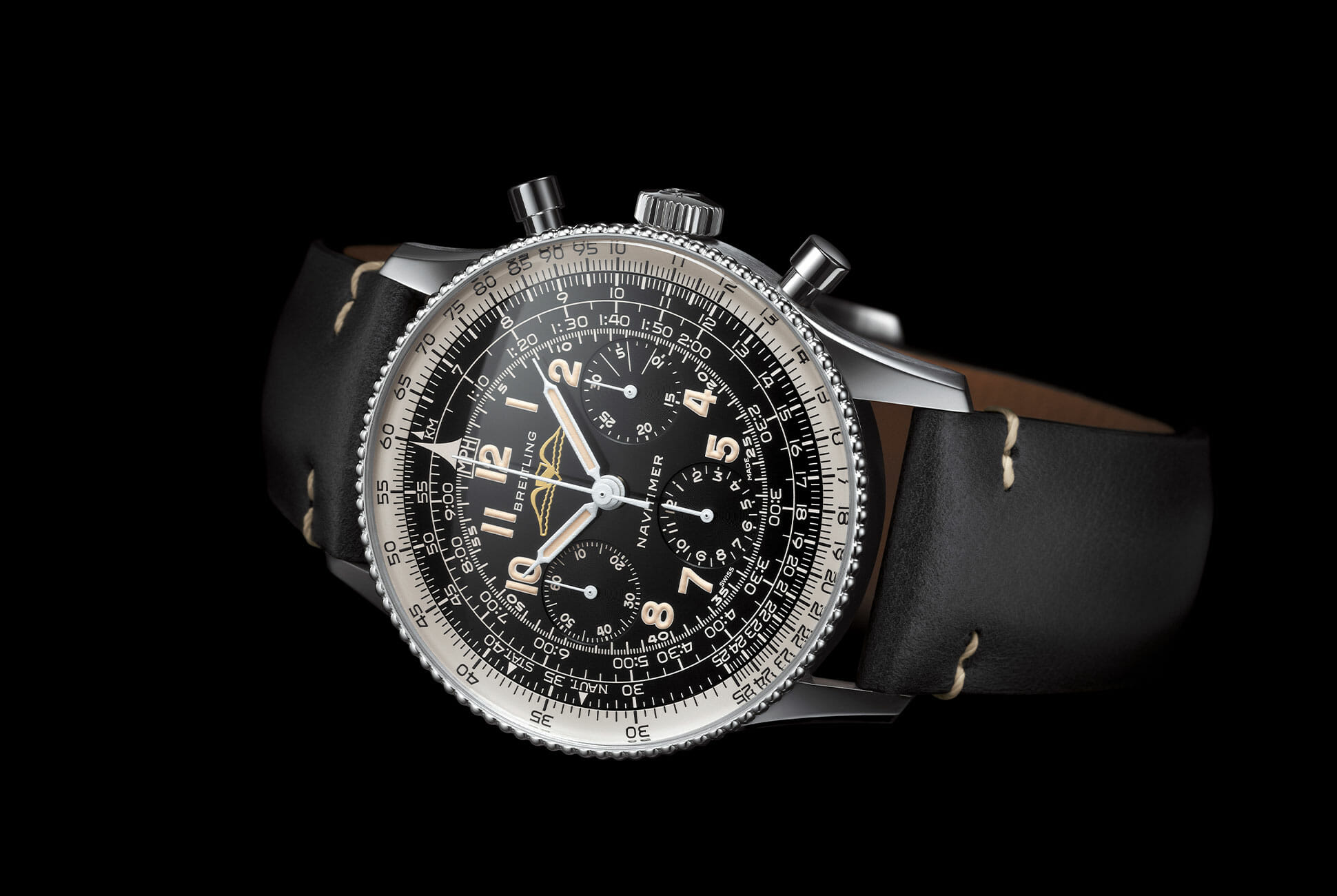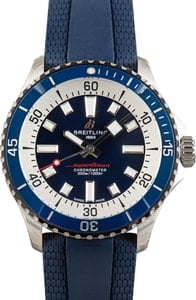The Breitling Navitimer is impressive, both in form and function. While the watch itself is certainly remarkable, with its polarizing dimensions and reliable chronograph movement, the most notable feature is the slide rule bezel, or mechanical flight calculator. This feature was developed before the invention of digital instruments and served as a means for calculating valuable information while in flight, such as climbing speeds, fuel consumption, and flight times. Even decades after coming to market, the Breitling Navitimer remains the go-to watch for many modern pilots.
While its roots lie in aviation, the slide rule bezel also has a practical application for everyday life, such as calculating a 15% tip for dinner or converting miles to kilometers. But how, exactly, does a bezel like this work? This quick overview will serve as a crash-course in how to use the basic functions of the Navitimer bezel so that you can get the most out of your Breitling watches.

First, what is a Slide Rule Bezel?
The circular slide rule was adapted from the linear slide rule for the sole purpose of performing logarithmic calculations on a watch. It consists of a top scale located on the bi-directional bezel along with a bottom scale that appears along the perimeter of the dial. The Tachymeter scale is situated just below the bottom scale and is presented in Kilometers. The circular slide rule includes STAT, KM, and NAUT units to measure standard mileage, kilometers, and nautical miles. The top scale can be adjusted in either direction to perform calculations, such as multiplication and division, against the bottom scale.
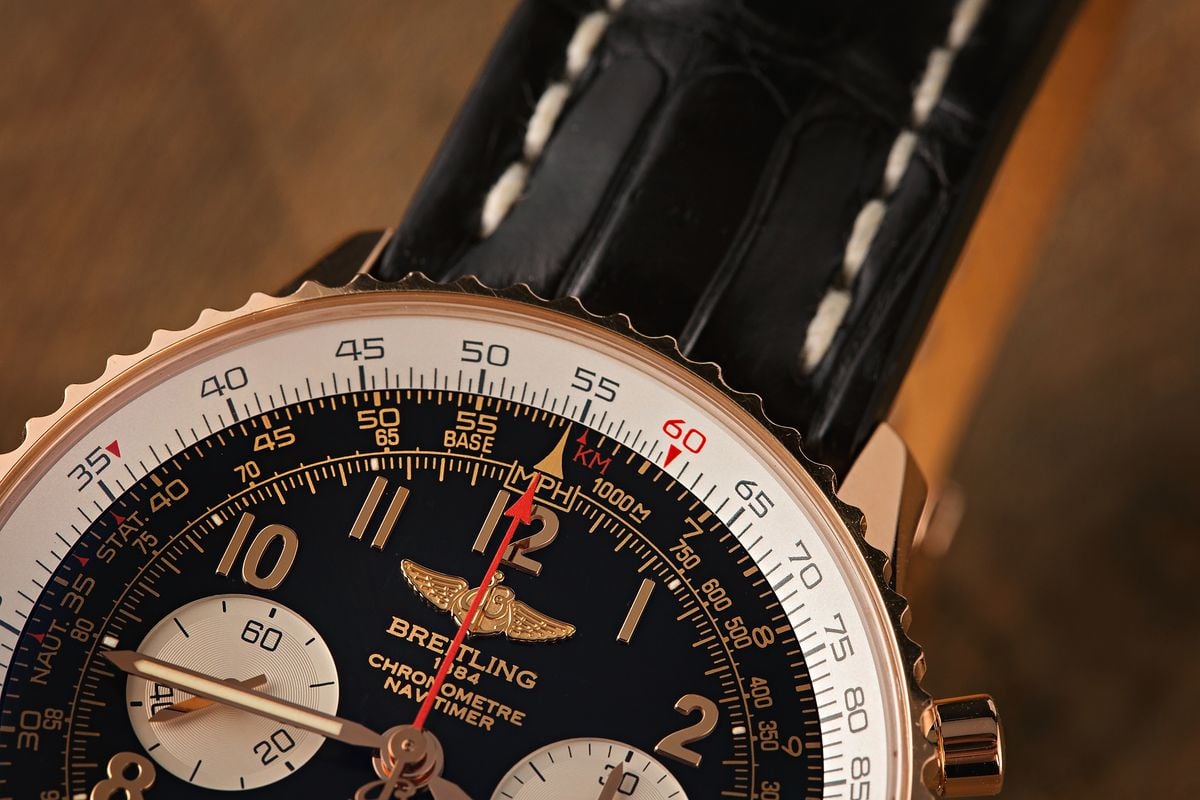
Breitling Navitimer Basic Calculations: Multiplying and Dividing
One important rule that you should keep in mind before learning how to use a slide rule bezel is that the numerical answer will not always be exact. The scale is not large enough to accommodate an infinite amount of numbers. Therefore, each number will be used to represent a broad range of answers. For example, the smaller numerals on the bottom scale might represent answers in the tens or hundreds. Decimals will also not be represented on the bezel. So, it’s essential to have a general idea as to what your answer will be beforehand if you intend to solely rely on the bezel to perform these calculations.
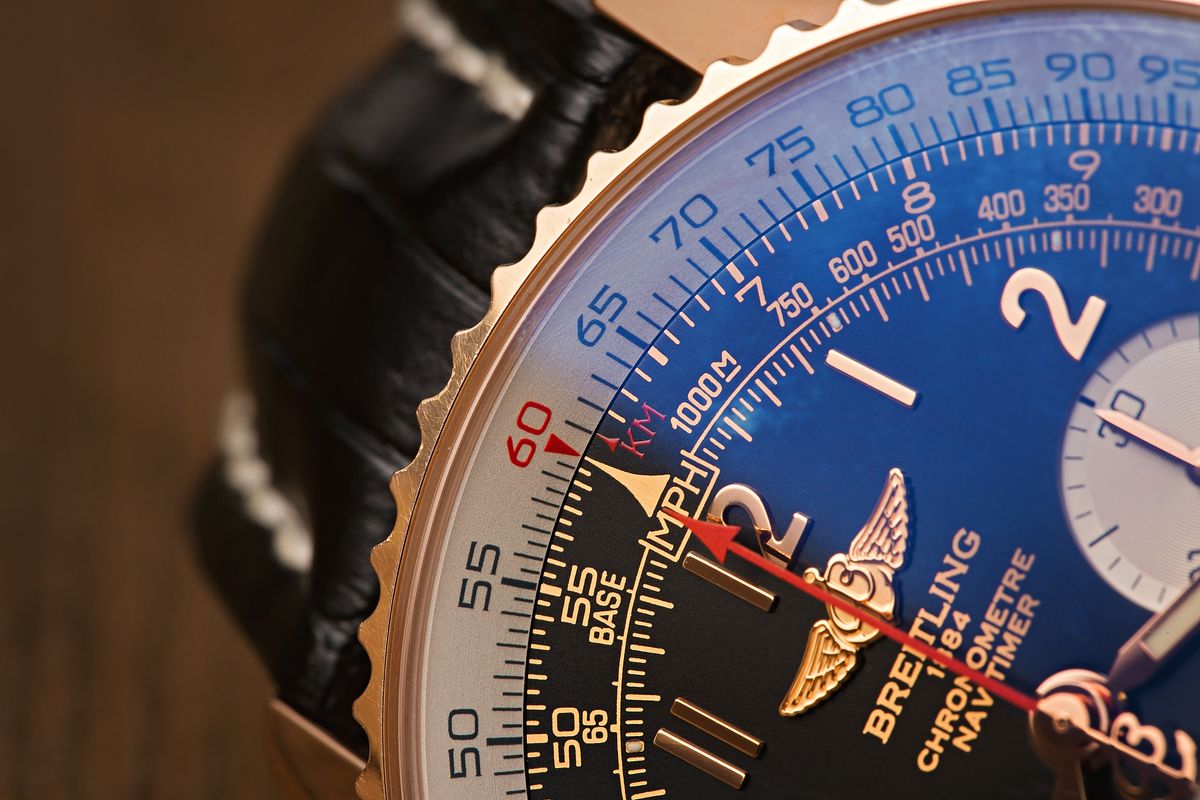
Both the top (rotating bezel) and bottom (the dial) scales have a red 10 base marker. Depending on the calculation you wish to perform, the 10 marker on either the top or bottom scale will serve as the starting point for your calculation. For example, if you want to multiply, rotate the top scale until one of the numbers that you are multiplying aligns with the 10 marker on the bottom scale. To multiply 8 x 12, the 10 marker on the bottom scale will align with the 8 on the top scale. Next, refer to the 12 marker on the bottom scale. It will reveal the answer to be 96 on the top scale above it. Basic mathematic rules apply when dividing, as the larger number will always be set on the outer scale and the smaller number on the bottom. The answer will align with the 10 marker on the bottom scale.
These basic principles can be applied for other everyday uses, such as calculating your tip at a restaurant, converting currency with the updated exchange rate, converting from miles to kilometers, or even converting from Fahrenheit to Celsius. As you dig deeper into the potential of the slide rule bezel, the calculations can get a bit trickier. However, first learning the basics is a great way to start if you wish to use your Breitling Navitimer for more complex calculations.


